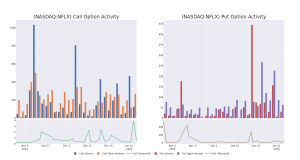Nvidia stock (NVDA) reached new heights in 2024, buoyed by demand for its artificial intelligence (AI)-enabling graphics processing units (GPUs). With a commanding share in the AI accelerator market, some analysts argue that any upside is already priced in. However, investors should consider Nvidia’s position in disruptive technologies, notably robotics. I’m still bullish on Nvidia due to its strong cash reserves, technological lead, and opportunities to dominate in new sectors.
One reason for my bullishness centers around future technological developments — namely robotics — and Nvidia’s position within this market. Nvidia’s opportunity to dominate the robotics industry is significant, driven by the convergence of powerful AI algorithms, high-performance computing, and advanced sensors.
Nvidia’s strategy leverages three critical components:
-
Omniverse: A powerful simulation platform that enables the creation of high-fidelity “digital twins” for robotic experimentation.
-
High-end GPUs: Cutting-edge hardware like the Blackwell architecture provides the necessary computational power for AI and robotics applications.
-
Foundation Models: Large-scale AI architectures optimized for multi-step reasoning and cross-domain capabilities.
This ecosystem allows Nvidia to simulate, test, and validate robotics applications at scale, significantly accelerating development and reducing costs. It also has several advantages over robotics peers like Tesla (TSLA), with analysts pointing to Nvidia’s advanced internet-scale data handling, simulation capabilities in the form of the Omniverse platform, and its hardware-software synergy.
Interestingly, it’s Nvidia’s enabling of the AI revolution that makes robotics much more of a reality in the very near future. And while estimates vary, the AI robotics market is poised for significant growth. Goldman Sachs projects the humanoid robotics market to reach $38 billion by 2035, while more bullish estimates from Ark Invest suggest a potential $24+ trillion global revenue opportunity by the 2030s.
In short, the company’s approach of combining powerful hardware, advanced simulation capabilities, and a robust AI ecosystem provides it with a favorable position for growth in the AI robotics market. Moreover, when coupled with Nvidia’s impressive cash flows and financial reserves, it’s not hard to see how Nvidia could dominate.



